This post may contain paid links. See more info on my privacy page.
Dry Aged Prime Rib is out-of-this-world delicious; by dry aging prime rib, it becomes more tender and the flavors begin to intensify. Once you try it, you won't want to cook prime rib any other way, and it's easier than you think! You can dry age prime rib right in your refrigerator with little effort.
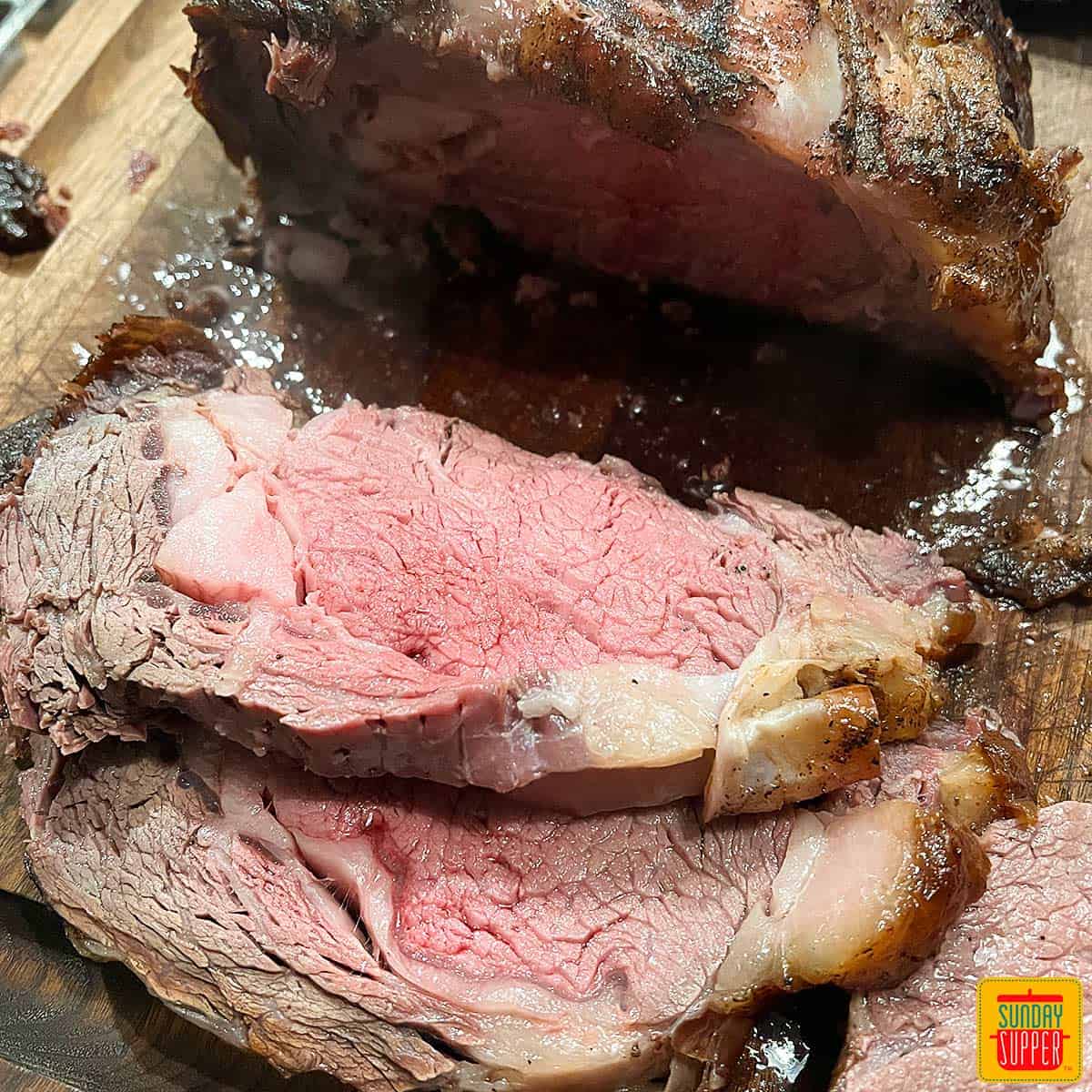
Jump to:
Dry Aging Prime Rib
If there's one thing you should know about me, it's that I love prime rib and have cooked it every way imaginable. From roasting, to smoking, grilling, sous vide, air frying, and even pressure cooking prime rib, this is a cut of meat I just can't resist making every holiday.
What makes it even better is dry aging. It's easy to dry age prime rib - easier than you think! You don't need any special tools, just space in your refrigerator.
I'll show you how to dry age prime rib at home with minimal effort. Plan 10-20 days ahead, then enjoy the most fork-tender rib roast you've ever eaten!
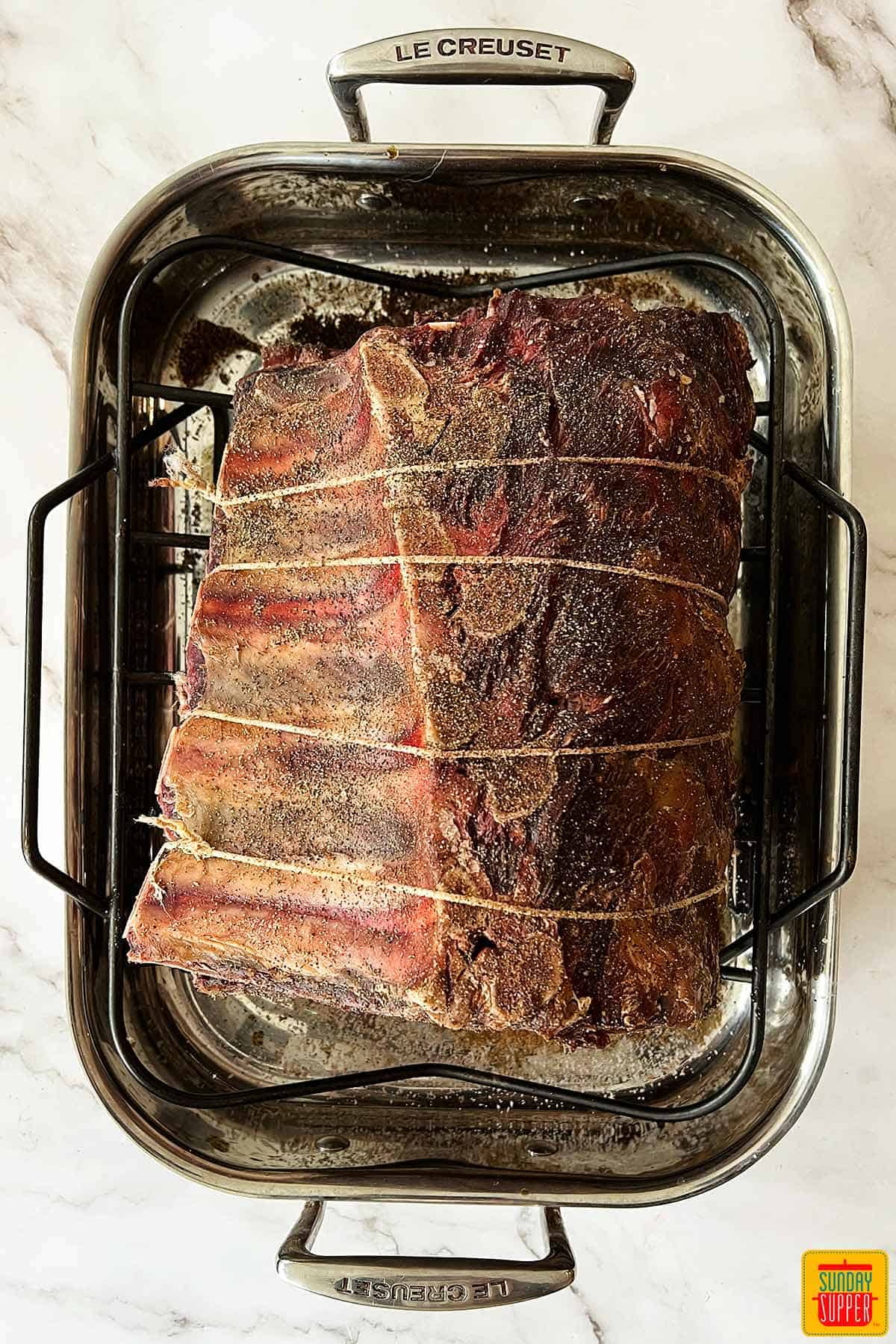
What is Dry Aging?
Dry aging prime rib is a method of tenderizing the beef by allowing the roast to sit in a controlled refrigerated environment for a week or longer. During the aging process, the proteins from the beef will break down, making it more tender and flavorful. There are special dry aging lockers that can be used to dry age beef, but in this case, you'll be dry aging rib roast in the refrigerator!
Prime Rib Dry Aged Ingredients
- Prime rib roast: You can use boneless or bone-in rib roast to dry age prime rib.
- Soy sauce: Soy sauce soaks into the surface of the meat, adding an intense umami flavor and beautiful dark crust.
- Salt: Salt is the key to the entire process! You'll want a quality, flaky salt. The larger crystals not only bind better to the meat but taste better, too.
- Pepper: Peppering the roast before cooking it not only helps the flavor soak in, but it allows the pepper to toast beautifully when you cook it, adding an extra dimension of flavor.
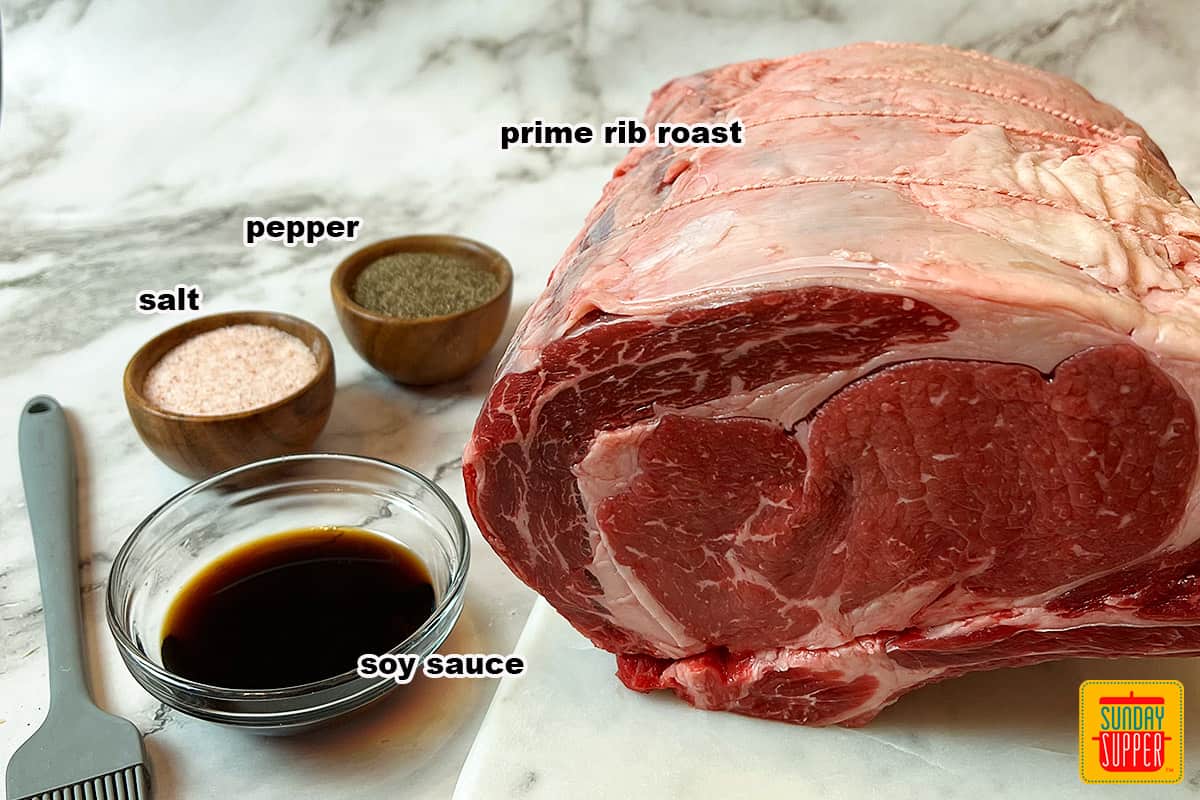
How to Dry Age Prime Rib
- Carefully place your prime rib roast on a roasting pan. Pat roast dry all over with a paper towel.
- Using a basting brush, brush the roast with soy sauce. Completely cover all sides of the roast.
- Generously coat all sides of your roast with salt and pepper.
- Place your prime rib in your fridge, uncovered, and allow it to dry age for 10-20 days.
- Once dry aged, you'll notice your prime rib getting darker in color and dry-looking. Remove the prime rib from the refrigerator and allow it to rest for 30 minutes before cooking.
Prime Rib Dry Aged Tips
- Buying a prime rib with rib bones attached provides better moisture and flavor for your roast during dry aging.
- Your prime rib doesn't need to be tied for dry aging, but it should be tied before cooking.
- Dry aging requires a good amount of space in your refrigerator, make sure to clear some room ahead of time!
- It may be helpful to place a fresh box of baking soda near your roast in the fridge to help deodorize it. It won't smell spoiled, but it has an intense beefy scent.
- When you're cooking prime rib, use my Prime Rib Temp Chart!
Dry Aged Prime Rib FAQ
Dry-aged beef is more tender and has a richer flavor than beef that has not been dry-aged. One of the first things you will notice about dry-aged prime rib is how tender the roast is - you can cut it with a fork. You'll also notice the rich and dense taste of beef with a subtle umami flavor that you can only get through dry aging.
Although it might seem scary at first to place a whole prime rib at the back of your refrigerator, it won't spoil thanks to the cool temperature and low humidity. Moisture contributes to meat spoiling, so by keeping it in a dry, cool place at the back of the fridge, you're able to dry age it safely as the moisture is drawn out of the meat.
Make your holiday feast unforgettable with a perfectly cooked dry-aged prime rib bursting with flavor and tenderness. This show-stopping centerpiece is a true crowd-pleaser, ideal for any special occasion or celebration. Whether hosting a Sunday Supper or a festive gathering, this recipe will leave your guests raving and returning for seconds. Don’t forget to pair it with your favorite sides and a bold red wine to complete the meal. Try it today and elevate your dinner table with this timeless classic!
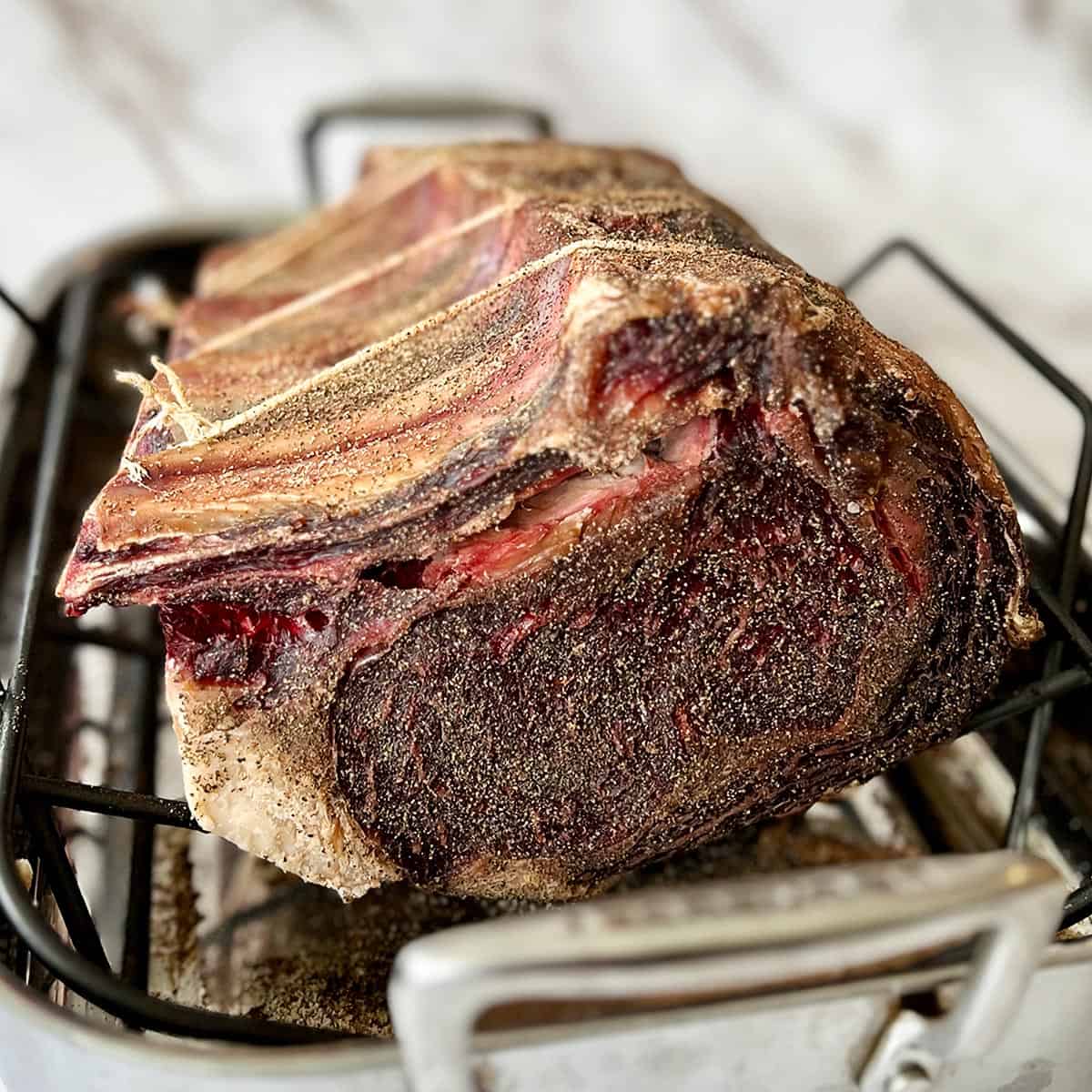
Dry Aged Prime Rib
Video
Equipment
- space in your fridge
Ingredients
- 1 large prime rib roast
- ½ cup soy sauce
- salt - to taste
- pepper - to taste
Instructions
- Carefully place your prime rib roast on a roasting pan. Pat roast dry all over with a paper towel.1 large prime rib roast
- Using a basting brush, brush the roast with soy sauce. Completely cover all sides of the roast.½ cup soy sauce
- Generously coat all sides of your roast with salt and pepper.salt,pepper
- Place your prime rib in your fridge, uncovered, and allow it to dry age for 10-20 days.
- Once dry aged, you'll notice your prime rib getting darker in color and dry-looking. Remove the prime rib from the refrigerator and allow it to rest for 30 minutes before cooking.
Notes
- Buying a prime rib with rib bones attached provides better moisture and flavor for your roast during dry aging.
- Your prime rib doesn't need to be tied for dry aging, but it should be tied before cooking.
- Dry aging requires a good amount of space in your refrigerator, make sure to clear some room ahead of time!
- It may be helpful to place a fresh box of baking soda near your roast in the fridge to help deodorize it.


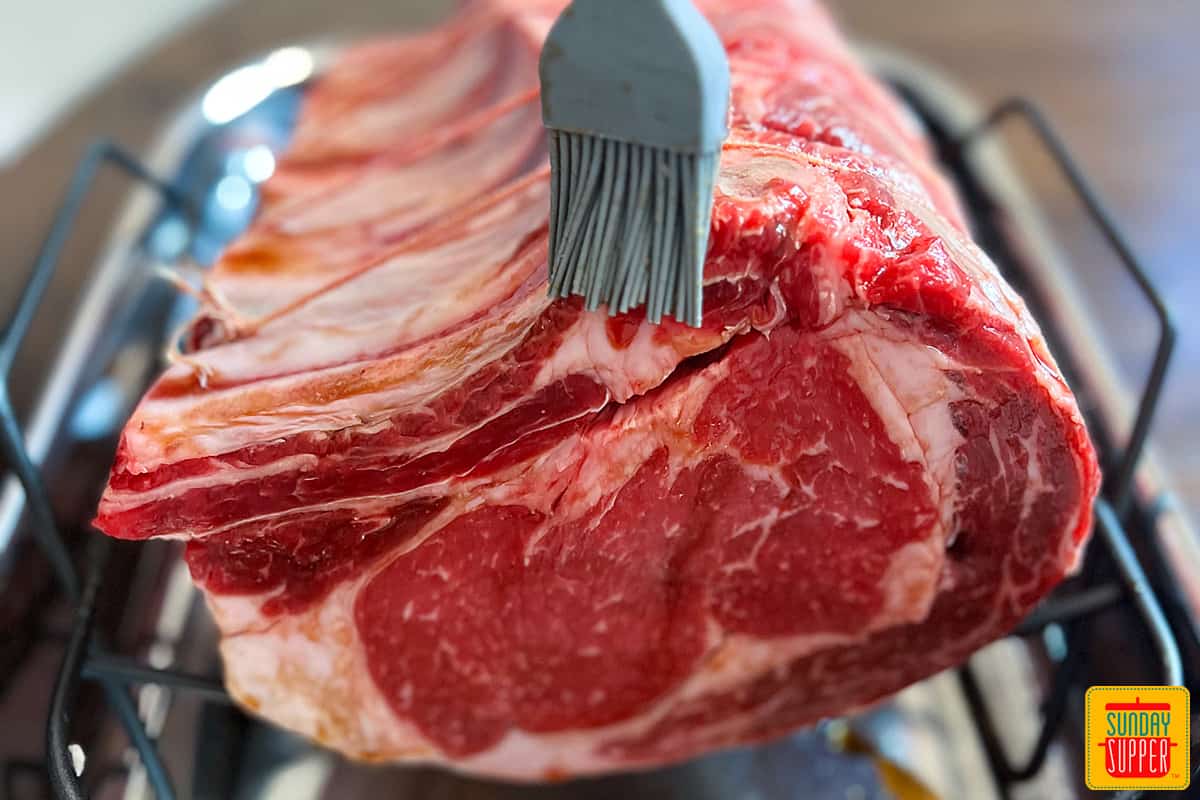
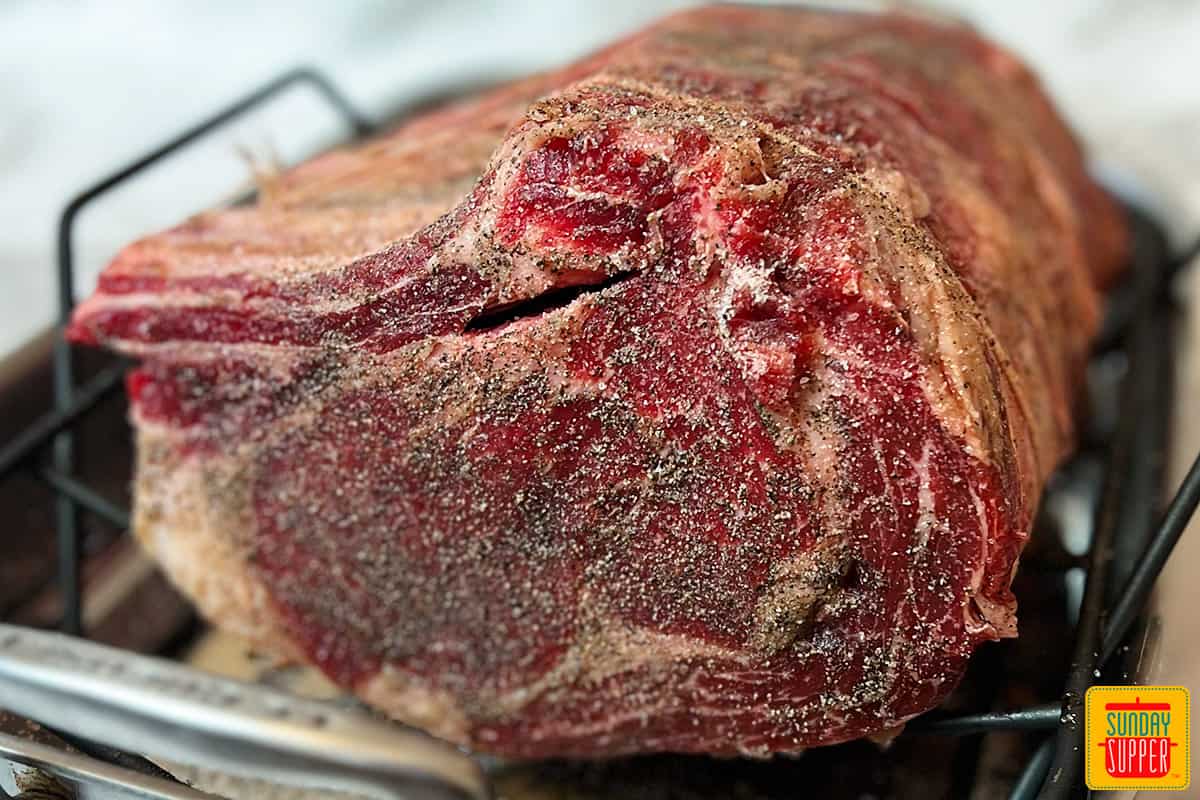
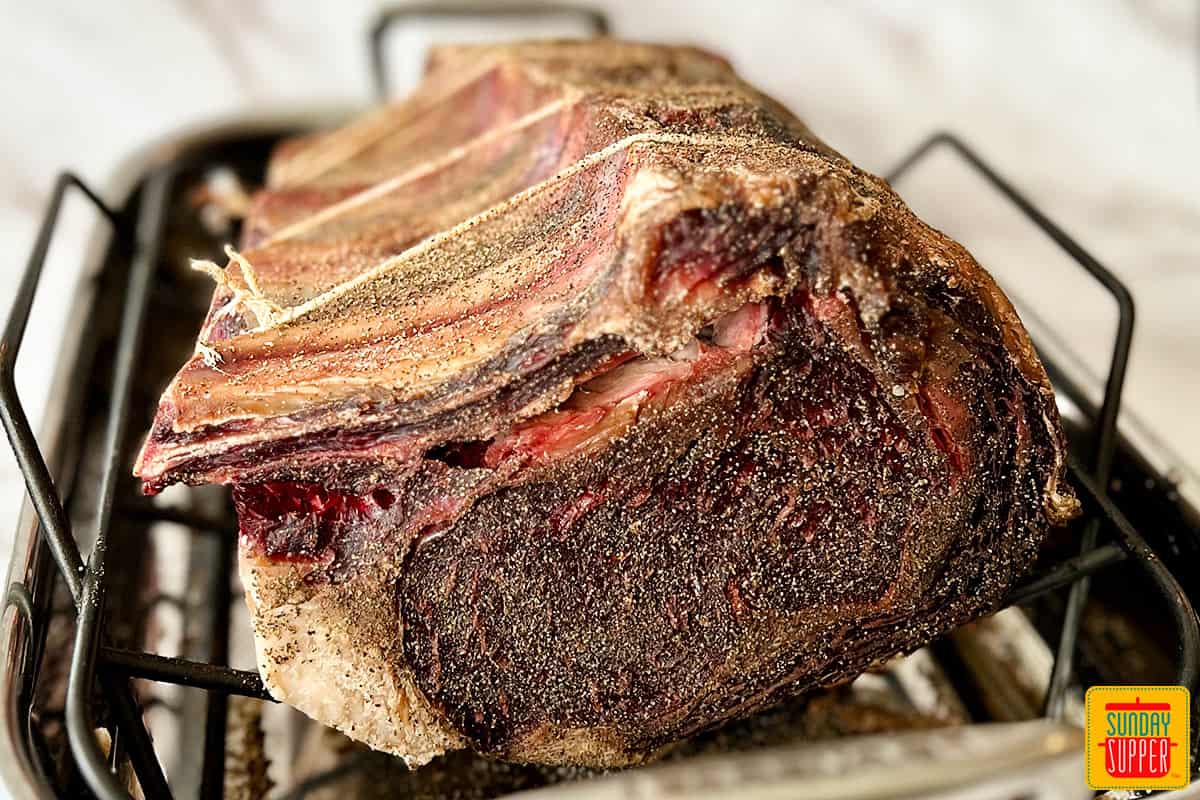
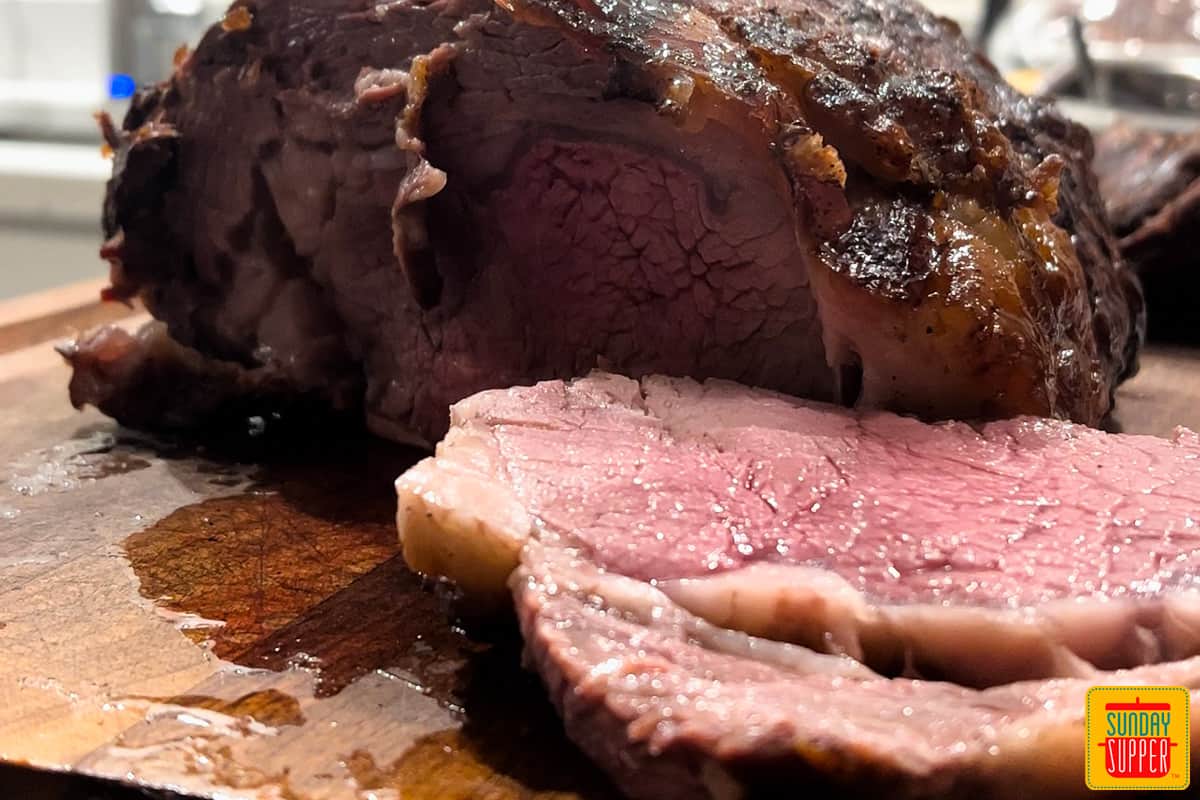
Bob says
Sounds delish, does the soy prevent spoilage or does the salt?
Em Beitel says
Hi Bob! It is super delicious! The trick is in the setup itself - with the wire rack over the baking dish. It allows cold air to perfectly circulate the meat, which is what dry ages it. The salt and soy do help because sodium helps draw out the moisture, though. I always place mine at the back of the refrigerator where it's coldest. Thank you for your comment!
Darleen says
I buy prime rib roasts when they are on special. Then I freeze them and cook them as I need them. My question is, do I age the roast and then freeze it or do I freeze it first and then age it.
Isabel Laessig says
Hi Darleen! You can do either, but I would recommend freezing after dry aging.
Robin says
Can I dry age it for only 7 days? I'm buying a prime rib roast tomorrow and Christmas is in 7 days...
Isabel Laessig says
Hi Robin! Generally, 7 days won't be enough to really taste the effects of dry aging. You absolutely can, but it may not make as much of a difference in that amount of time. Enjoy, and thank you for your question!
ellen says
Can I omit the soy sauce?
Isabel Laessig says
Hi Ellen! I would recommend using a substitute, like a soy-free soy sauce or Worcestershire sauce.
Isabel Laessig says
Hi Ellen! Yes, you can omit the soy sauce! But, you will need to increase the amount of salt used. Enjoy!
CJ says
Intrigued, definitely intrigued! My wife has recipe for the no peek cooking method that is fabulous, guests always ask how it’s made and want the recipe, so this will be awesome to do!
Ruthanne Evangelista says
Can I Dry Age for more than 20 days? It's December 1st and I plan on cooking for Christmas dinner.
Isabel Laessig says
Hi Ruthanne! Yes, that should work out well. I would advise being careful on how often/how long the refrigerator is opened. Enjoy!
Rosa R says
Can I use boneless prime rib? And still age it for the same amount of days?
Isabel Laessig says
Hi Rosa! Absolutely. Enjoy!